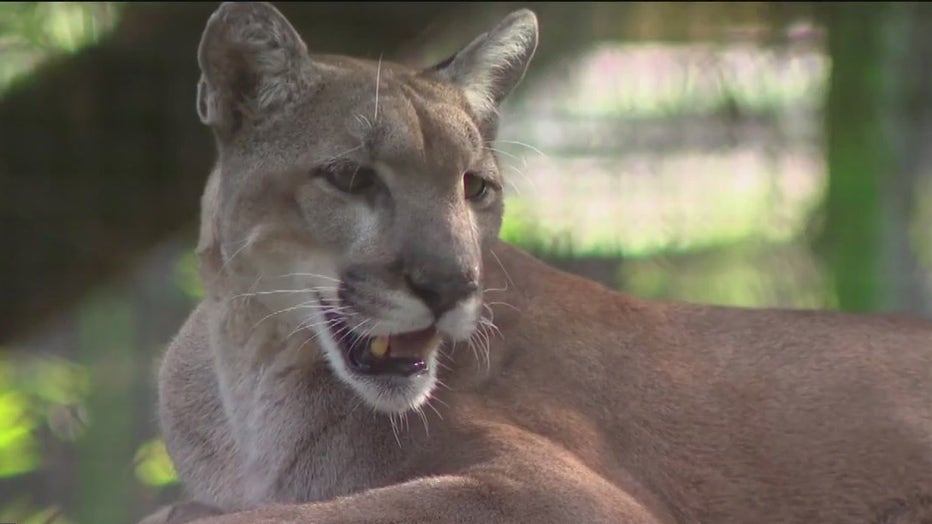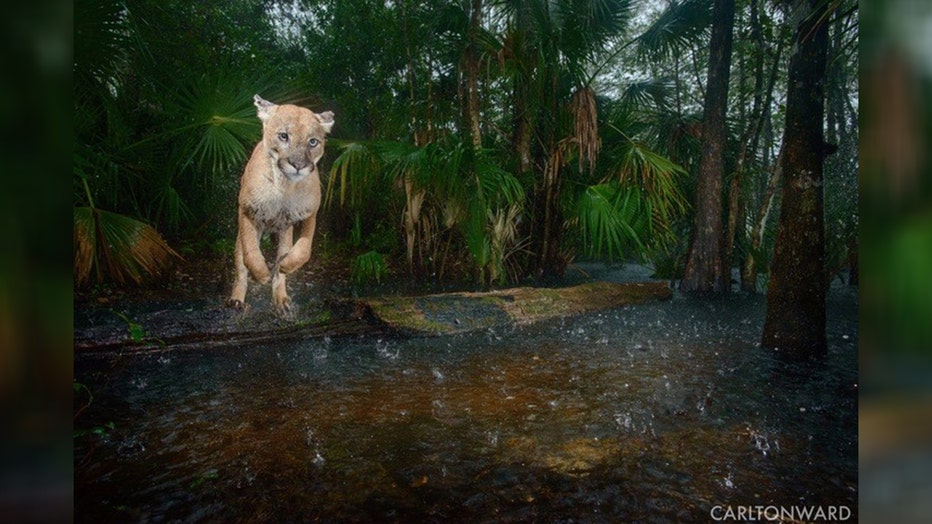Decline in Florida Panther car deaths may show troubling population trend
TAMPA, Fla. - The Florida Panther, the official state animal, is one of the most endangered animals in the world. Their population once spread from Arkansas, across the Carolinas and down, but it is now limited to a small area in Southwest Florida.
The leading cause of the big cat’s death is car collisions. New data released shows a sharp decline in car collisions this year, and although that sounds like a good thing, researchers and advocates are concerned.
"Around this time of year, we would’ve usually seen 24 to 26 road deaths. This year, we’re up to 10. That’s less than half of what we would normally see this time of year," said Elise Bennett, the Florida director of the Center for Biological Diversity.
VIDEO: 600-pound gator found wandering outside Florida mall
"It’s possible there are just fewer panthers to be hit," she said. "That their numbers have declined so low now that there aren’t as many road kills, because there are fewer of them roaming around."
Advocates in Florida have been trying to save the species by restricting urban development planning in the state, and utilizing wildlife passage that have been built under highways.

National Geographic photographer and Florida wildlife conservationist Carlton Ward is known for his work on the documentary "Path of the Panther" and said there is hope for the species.
"Through conservation efforts, there’re up to nearly 200 [panthers] today, but the thing is that’s not enough. There needs to be 600 or more panthers to be genetically stable," Ward said.
STUDY: Chimpanzees recognize photos of friends they haven't seen for decades
"I’ve got this one photograph of a male Florida panther jumping over a swamp creek… you see these wild eyes as this panther flies through the air, and you see the resilience and the power of this animal, and you see the hope and perseverance, against all odds, it’s trying to make a comeback," Ward said.

Courtesy: Carlton Ward.
FOX 13 visited ZooTampa at Lowry Park, one of the state’s biggest panther rehabilitation centers, which houses three Florida Panthers. Experts there said anyone can do their part.
"We have three beautiful panthers behind us to help educate our guests daily on the importance of being alert in your vehicle when you’re driving, when these animals are most active, and really just giving them tips to coexist with the species that you’re going to find in your backyard," Jamie Vaccaro of ZooTampa said.
ZooTampa works with Florida Fish and Wildlife Conservation Commission to take care of these panthers – and to monitor their movements on cameras using the underground wildlife passages.
"Hopefully, we can catch a panther on those cameras showing us what the panther population is doing, but also seeing where we need to go even further with protection for the species," Vaccaro said.
MORE: Venomous snake calls on the rise for animal trappers in Tampa Bay area
Still, experts said more research needs to be done to address their shrinking population in the Sunshine State.
"I came across a panther in the wild, it sat and stared at me – it stopped my heart. This was so electrifying," Ward said of his interactions in the wild. "You are looking into the true heart of the Florida wilderness. It’s this wild space that’s hidden in plain sight to so many of us."
"You have this ancient predator still surviving and still being a symbol of nature and balance that we have an opportunity to protect."

